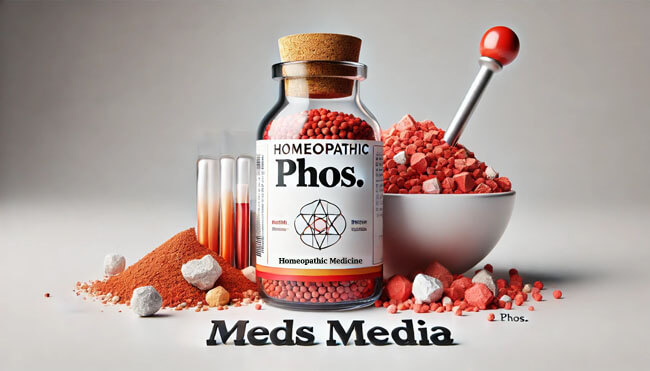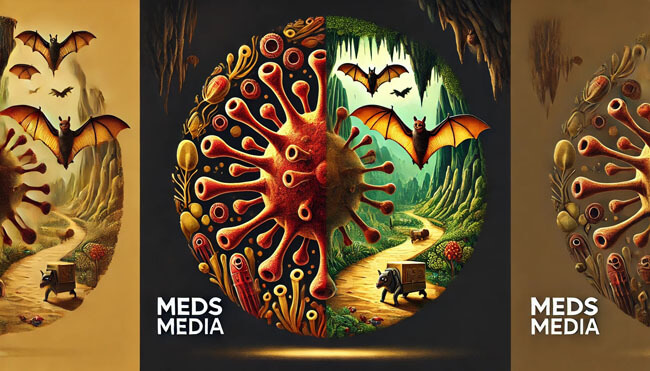Psychological Insights Behind Suicidal Conditions
Suicidal conditions often arise from a complex interplay of emotional, cognitive, and environmental factors. At the core, individuals experiencing suicidal thoughts or behaviors frequently struggle with overwhelming feelings of hopelessness, despair, and a perceived lack of control over their lives. These feelings can stem from various sources, including traumatic experiences, chronic stress, unresolved grief, and feelings of isolation.
Cognitive Distortions: People with suicidal tendencies often suffer from cognitive distortions, where their thought patterns become increasingly negative and irrational. They may catastrophize situations, believing that their current pain or problems are insurmountable. This can lead to a narrowing of their mental focus, where they see suicide as the only solution to their distress.
Emotional Dysregulation: Suicidal individuals frequently experience intense and fluctuating emotions. Emotional dysregulation, characterized by an inability to manage emotions effectively, can cause them to feel overwhelmed by their feelings, making them more susceptible to impulsive decisions like attempting suicide. This dysregulation is often linked to conditions like borderline personality disorder, depression, and bipolar disorder.
Sense of Burden: A common psychological theme in suicidal ideation is the belief that one is a burden to others. Individuals may feel that their existence is causing pain or inconvenience to their loved ones, leading to the belief that their death would be a relief for others. This distorted sense of self-worth can exacerbate feelings of hopelessness.
Perceived Isolation: Even when surrounded by people, those experiencing suicidal thoughts often feel profoundly isolated. This perceived isolation is not just about physical loneliness but a deep emotional disconnection from others. They may believe that no one truly understands their pain or that they have no one to turn to, intensifying their sense of despair.
Loss of Meaning or Purpose: A significant psychological factor behind suicidal conditions is the loss of meaning or purpose in life. This existential crisis can arise from various life events, such as the loss of a loved one, a major failure, or a sudden change in circumstances. Without a sense of purpose, life can seem unbearable, leading individuals to consider suicide as a way to escape their perceived meaningless existence.
Self-Punishment: For some, suicide is seen as a form of self-punishment. This can be rooted in feelings of guilt, shame, or self-loathing. They may feel that they deserve to die because of something they’ve done or believe they are inherently flawed. This self-directed anger can be a powerful motivator for suicidal actions.
Ambivalence: Many individuals contemplating suicide experience ambivalence, where they are torn between the desire to live and the desire to escape their pain. This ambivalence can manifest as a cry for help, where the individual might engage in suicidal behavior hoping to be saved, even while feeling hopeless. This conflict between life and death highlights the complexity of suicidal ideation, where the individual may desperately want relief but not necessarily through death.
Impulsivity: Impulsivity plays a critical role in suicidal behavior, particularly in younger individuals and those with certain personality disorders. In moments of extreme distress, an individual might act on suicidal thoughts without fully considering the consequences, leading to attempts that are often spontaneous and driven by temporary emotional states.
Suicidal Conditions and Homeopathy Indications
Definition and Overview
Suicide is the intentional act of self-destruction, often reflecting deep-seated psychological distress. Homeopathic philosophy categorizes suicide under different miasmatic influences, including Syphilis (+++), Sycosis (+), and Psora (++), each representing various degrees of mental and emotional imbalances.
Suicidal Ideation
Suicidal ideation refers to a preoccupation with the idea of ending one’s life. These thoughts can vary in intensity and frequency:
- Occasional and transient thoughts often align with Psora (++) and Syphilis (++) influences, reflecting temporary states of distress.
- Frequent suicidal thoughts indicate a stronger Syphilis (+++) component, with Psora (++) as a contributing factor.
- Persistent ideation suggests an overwhelming influence of Syphilis (+++), with Psora (+) still playing a role.
- Compelling or impulsive ideation, often linked to substance abuse or intoxication, is primarily driven by Syphilis (+++), with Psora (++) as an additional factor.
Suicidal Communications
This term refers to the act of talking about or expressing one’s intention to commit suicide in various ways. The miasmatic influences here include Psora (+++), Sycosis (++), and Syphilis (+), each reflecting different levels of distress and intent.
Parasuicide
Parasuicide involves suicide attempts or gestures that may not result in death but indicate serious intent or distress. The miasmatic influences include Psora (+) and Syphilis (++).
Suicidal Behavior
Suicidal behavior encompasses all aspects of suicidal activity, including completed suicide, parasuicide, suicidal ideation, and suicidal communications. The miasmatic underpinnings vary depending on the specific nature and severity of the behavior.
Objectives of Suicide
The primary objective of suicide is often self-harm with the intent to die, strongly influenced by Syphilis (+++), with Psora (+) as a contributing factor. However, some suicidal acts may be driven by other purposes, such as to attract attention or communicate distress, involving Psora (+++), Sycosis (++), and Syphilis (+).
Causes of Suicidal Behavior
Social Factors: Rootlessness, confusion, lack of connectedness, hopelessness, shame, self-reproach, domestic violence, and parental alcoholism are significant social factors contributing to suicidal tendencies. These factors are influenced by Psora (++), Sycosis (+), and Syphilis (+).
Genetic Factors: A family history of affective disorders, such as bipolar disorder, significantly increases the risk of suicide, especially under the influence of Syphilis (+++), with Psora (+) as a secondary factor.
Neuroendocrine & Neurochemical Factors: Abnormal functioning of the hypothalamopituitary-adrenocortical axis, abnormal growth hormone secretion, and serotonin metabolism are also linked to suicidal behavior. These factors are influenced by Psora (+++), Sycosis (+), and Syphilis (+).
Psychiatric Disorders: Suicidal behavior is commonly associated with psychiatric disorders such as major depressive disorder, bipolar disorder, substance use disorder, and schizophrenia. The miasmatic influences here include Psora (+++), Sycosis (++), and Syphilis (+). In some cases, suicidal acts may be a response to hallucinations or delusions, particularly in conditions like schizophrenia or schizoaffective disorder, driven by Syphilis (++), with contributions from Psora (+) and Sycosis (+).
Transactional Diathesis-Stress Model
This model suggests that psychological factors, such as exposure to domestic violence, abuse, rejection, or significant personal loss, combined with a genetic predisposition to affective disorders or impulsivity, create a vulnerable personality. Such individuals may struggle to cope with stress, leading to chronic pessimism, low self-esteem, and an impaired ability to regulate emotions and impulses. This vulnerability is influenced by Psora (++), Sycosis (+), and Syphilis (++).
Common Motivations for the Suicidal Act
Suicidal motivations can vary widely, including:
- Atonement: Punishing oneself for perceived wrongs.
- Control: Demonstrating fearlessness of death.
- Escape: Seeking freedom from physical and emotional pain.
- Rebirth: Belief in starting anew after death.
- Reunion: A desire to join deceased loved ones.
- Revenge: Aiming to make others feel remorse.
- Self-sacrifice: Believing one’s death will benefit others.
Risk Factors
Key risk factors for suicidal behavior include family conflict, personal loss, relationship problems, rejection, academic or professional failure, and other significant life stresses. These factors are influenced by Psora (++), Sycosis (+), and Syphilis (+).
Treatment Approaches
Addressing suicidal tendencies requires a comprehensive approach that includes extended individual psychotherapy, cognitive-behavioral therapy, family therapy, and homeopathic treatment tailored to the individual’s miasmatic profile. By understanding and addressing the underlying miasmatic influences—Psora, Sycosis, and Syphilis—homeopathy offers a unique approach to supporting individuals through these difficult conditions.
Top Homeopathic Remedies for Suicidal Symptoms, Ranked by Intensity:
Aurum (Aur.) → Arsenicum Album (ars.) → Nux Vomica (nux-v.) → Natrum Sulphuricum (nat-s.) → Alumina (alum.) → Mercurius (merc.) → China Officinalis (chin.) → Belladonna (bell.) → Staphysagria (staph.) → Hepar Sulphuris (hep.) → Rhus Toxicodendron (rhus-t.) → Antimonium Crudum (ant-c.) → Hyoscyamus (hyos.) → Lachesis (lach.) → Sepia (sep.) → Thuja (thuj.) → Calcarea Carbonica (calc.) → Pulsatilla (puls.) → Sulphur (sulph.) → Naja (naja) → Stramonium (stram.) → Drossera (dros.) → Argentum Nitricum (arg-n.) → Lac Defloratum (lac-d.) → Veratrum Album (verat.) → Glonoinum (glon.) → Psorinum (psor.) → Natrum Muriaticum (nat-m.) → Aurum Muriaticum Natronatum (aur-m-n.) → Ignatia (ign.) → Causticum (caust.) → Spongia (spong.) → Silicea (sil.) → Carbo Vegetabilis (carb-v.) → Carcinosin (carc.) → Secale Cornutum (sec.) → Anacardium (anac.) → Nitricum Acidum (nit-ac.) → Medorrhinum (med.) → Platina (plat.) → Thea (thea) → Capsicum (caps.) → Aurum Muriaticum (aur-m.) → Kali Bichromicum (kali-br.) → Iodum (iod.) → Phosphorus (phos.) → Dolichos (dol.) → Spigelia (spig.) → Hydrogone (hydrog.) → Cimicifuga (cimic.) → Helleborus (hell.) → Graphites (graph.) → Opium (op.) → Ruta (ruta) → Conium (con.) → Natrum Carbonicum (nat-c.) → Natrum Silicum (nat-sil.) → Origano (orig.) → Mercurius Auratus (merc-aur.) → Aurum Salts (aur-s.) → Aurum Arsenicum (aur-ar.) → Camphora (camph.) → Lycopodium (lyc.) → Plutonium Nitricum (plut-n.) → Positronium (positr.) → Aconitum (acon.) → Gelsemium (gels.) → Lilium Tigrinum (lil-t.tab.) → Falco Peregrinus (falco-pe.) → Iodum Officinale (iodof.) → Plumbum (plb.) → Ustilago (ust.) → Zincum (zinc.) → Morphinum (morph.) → Rumex (rumx.) → Tuberculinum (tub.) → Ozone (ozone) → Antimonium Tartari (ant-t.) → Amber (ambr.) → Fuligo (fuli.) → Gambogia (gamb.) → Iris Versicolor (iris) → Mancera (manc.) → Protargol (prot.) → Ranunculus Bulbosus (ran-b.) → Symphytum (symph.) → Zincum Phosphoricum (zinc-p.) → Maranta (marb-w.) → Loxosceles Recluse (loxo-recl.) → Triticum Vulgare (tritic-vg.) → Thuja Lignum (thuj-l.) → Alumina Phosphorica (alum-p.) → Alumina Silicea (alum-sil.) → Calcarea Silica (calc-sil.) → Clematis (clem.) → Crotalus Horridus (crot-h.) → Dulcamara (dulc.) → Kali Arsenicosum (kali-ar.) → Kali Chloratum (kali-chl.)
Similar Posts

LM Potencies in Homeopathy Explained | Insights from the 6th Edition of the Organon
Zincum Picricum Homeopathic Medicine & Personality | Uses, Benefits & Indications
Zincum Phosphoricum Homeopathic Medicine & Personality | Uses, Benefits & Indications
Zincum Iodatum Homeopathic Medicine & Personality | Uses, Benefits & Indications
Zincum Bromatum Homeopathic Medicine & Personality | Uses, Benefits & Indications
Zea Homeopathic Medicine & Personality | Uses, Benefits & Indications
Zincum Aceticum Homeopathic Medicine & Personality | Uses, Benefits & Indications
Zincum Cyanatum Homeopathic Medicine & Personality | Uses, Benefits & Indications
Zincum Muriaticum Homeopathic Medicine & Personality | Uses, Benefits & Indications
Zincum Oxydatum Homeopathic Medicine & Personality | Uses, Benefits & Indications
Zincum Sulphuricum Homeopathic Medicine & Personality | Uses, Benefits & Indications

Phosphorus Homeopathic Medicine & Personality | Uses, Benefits & Indications
Causticum Homeopathic Medicine & Personality | Uses, Benefits & Indications

Blood Clot in Eyes: Symptoms, Homeopathic Treatment & Prevention

